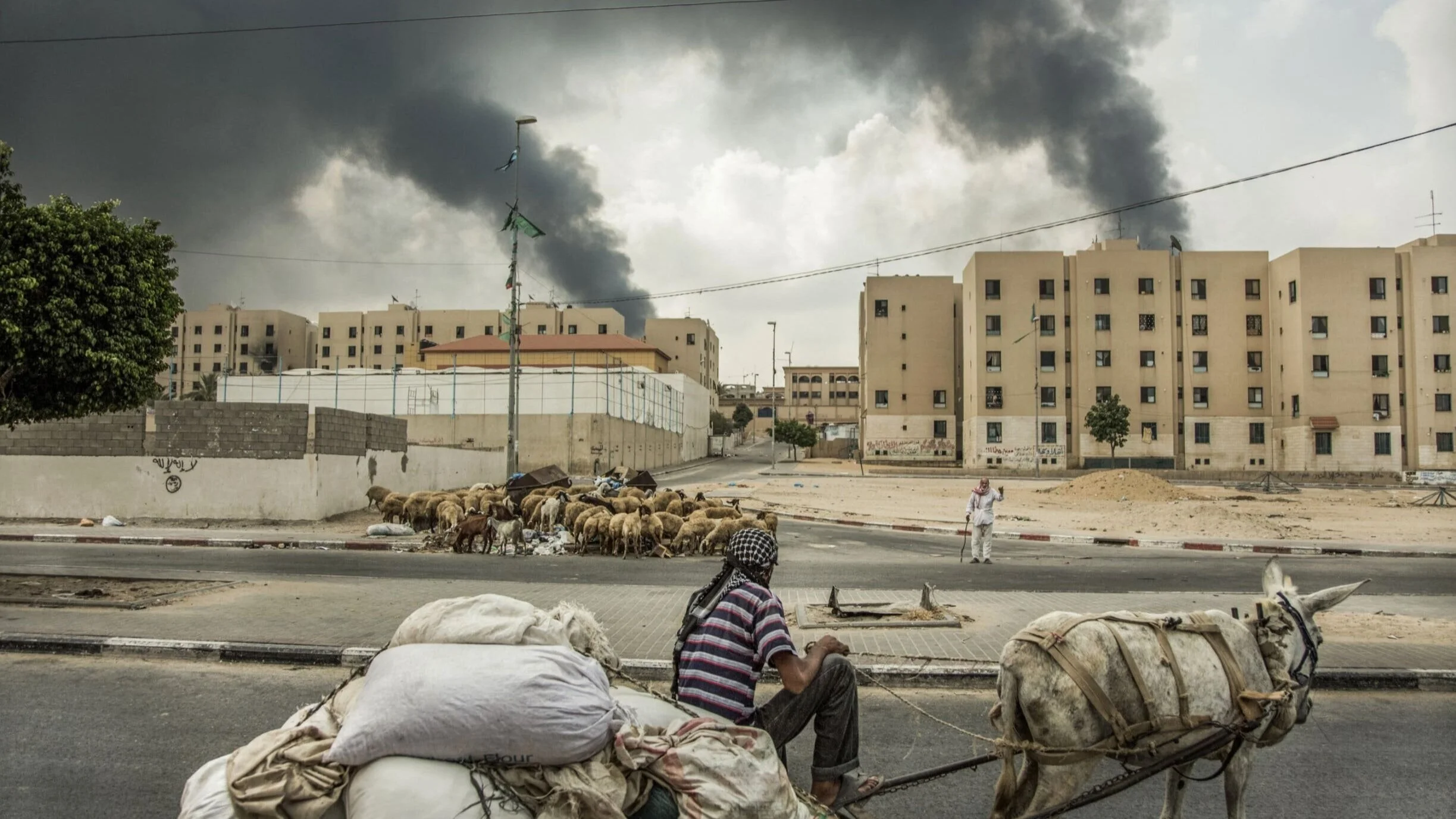Gaza
Life in the Gaza Strip is portrayed in a well-meant but arguably misjudged documentary.
We have here a well-intentioned documentary which invites comparisons with other films, but not to its advantage. Garry Keane and Andrew McConnell are co-directors and co-writers and, while Keane also happens to be a photographer, it is McConnell who takes the sole credit for the photography. The inclusion of that writing credit does not mean that there is any narration in Gaza and furthermore the only historical background information we are given is served up in brief written statements at the start. We may all be aware of the long-lasting Israeli-Palestinian conflict and its impact on the Gaza Strip which, we are told, is 25 miles long and 7 miles wide. All the same, since this is a film about the sufferings of the Palestinians who live there, it would be appropriate to supply more details. When it comes to the rule of the Islamic military group Hamas which governs Gaza we get little more than a passing reference to the fact that their presence prevents any foreseeable reconciliation. Similarly, a series of wars since 2008 get a mention, but much more could be said about the daily extent of hostilities following cease-fires and the frequency of the confrontations between the Israeli troops and those protesting against the blockade in force.
The approach adopted by Keane and McConnell is akin to that of Asif Kapadia in his documentaries since in addition to the lack of a commentary, there is a deliberate avoidance of talking heads instead of which we have a series of voice overs by various inhabitants accompanied by images connected with their lives. Kapadia has learnt to fuse these elements superbly, but the interest of both directors in photography leads here to visuals which, self-consciously set up, do not blend readily with the accompanying comments since they draw attention to themselves. It is also the case that some of the people seen and heard return later in the film while others do not and fresh voices are added quite late on. What this means is that Gaza seems shapeless and the shooting style also results in certain scenes which have words spoken on screen coming across as though they had been scripted. Comments are made likening Gaza to a big open prison while its inhabitants live in constant fear for their safety, but this is heard rather than fully felt.
By chance, I saw Gaza only days after viewing For Sama, a forthcoming release about civilian sufferings in Aleppo. That film illustrates admirably how to draw in an audience and establish a sense of direct connection between the viewer and those whose daily reality is to be seen on the screen. The situation in Gaza is not less worthy of being recorded on film, but in this film, despite it managing to be more telling at its climax (a violent confrontation presented in montage-like images), the impact is much less than one would have hoped. The haphazard jumps from one person to another left me wishing that the film had been better shaped and better able too to take us into the lives of these people as opposed to making us aware of how the filmmakers were presenting the material. The sense of immediacy so strongly present in For Sama that it immerses you is rarely, if ever, captured here.
MANSEL STIMPSON
Featuring inhabitants of the Gaza Strip.
Dir Garry Keane and Andrew McConnell, Pro Brendan J. Byrne, Paul Cadieux, Garry Keane and Andrew McConnell, Screenplay Garry Keane and Andrew McConnell, Ph Andrew McConnell, Ed Mick Mahon, Music Ray Fabi.
Real Films/Filmoption International/Fine Point Films/Gebrueder Beetz Filmproduktion/ZDF/Screen Ireland-Wildcard Distribution.
92 mins. Canada/Ireland/UK/Germany/Sweden/Denmark. 2018. Rel: 9 August 2019. Cert. 15.


